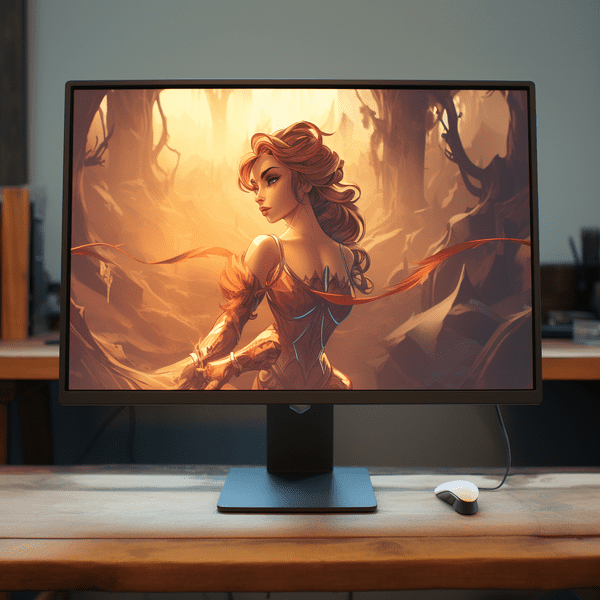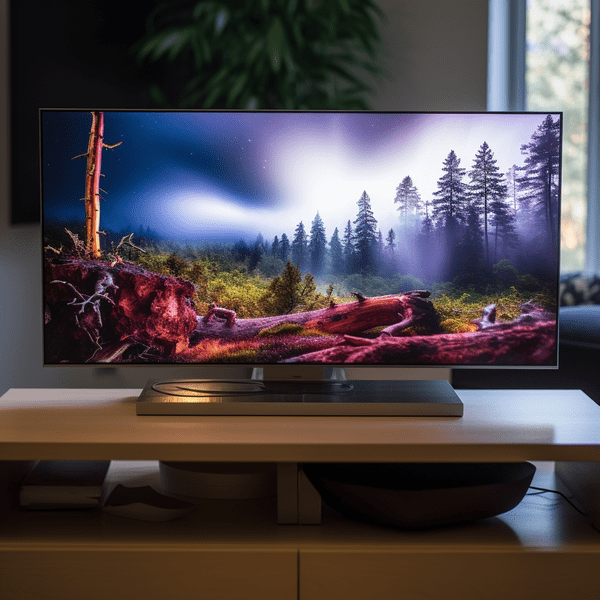Have you ever found yourself at the precipice of a tech quandary, staring down at a spec sheet peppered with alien jargon like IPS, OLED, and refresh rates? Yeah, me too. It’s like walking into a boxing match between terms we hardly understand.
And there, in the heart of the ring, we find ourselves caught in a tech face-off for the ages: IPS vs OLED. Is it a head-to-head battle or are we merely comparing apples to oranges?
Well, folks, buckle up. We’re about to dive headfirst into this tech-ridden labyrinth, exploring the crevices and crannies of the OLED and IPS worlds, their strengths, their weaknesses, and how they can pivot your product line from good to exceptional.
IPS Displays: The Old Reliable?
Weighing in from the tech yesteryears, we’ve got IPS or In-Plane Switching displays. Why have these panels stuck around in an age when technology leaps forward in quantum bounds every second Tuesday?

For starters, IPS displays deliver vibrantly rich colors that stay consistent no matter where you view them from, thanks to their incredibly wide viewing angles. Perfect for sharing your screen without that awkward “shifty color syndrome.”
But even the tallest giants have their downfalls. IPS displays consume a tad more power than their OLED counterparts. So if you’re all about battery life and energy efficiency, IPS might seem like a second choice. What is OLED (Organic Light-Emitting Diode)?
OLED Displays: The Vibrant Upstart?
In the other corner, OLED or Organic Light Emitting Diodes, the new kids on the block with a few aces up their sleeves.

OLED displays are an audacious exhibition of deep blacks, swift response times, and eye-watering contrast ratios. Almost like watching a movie in a dark room where the colors pop and dance around the screen. Don’t believe me? Check out this what is OLED.
But with great power comes great… challenges. OLED displays can suffer from a niggling problem called ‘burn-in.’ Static images left on for too long could leave ghostly imprints. Kind of like an unwanted guest overstaying their welcome.
How To Make the Choice: OLED or IPS?
Choosing between OLED and IPS is like being asked to choose between a pickup truck or a sports car. They’re both vehicles, but they cater to wildly different needs.
If you’re after a jack-of-all-trades, a display that can rough it out in a broad range of applications, an IPS LCD might be just the ticket. But if you want to push the envelope of visual experience and can manage the energy demands, you might want to get your hands on the OLED.
IPS vs OLED: What’s the Final Word?
The best choice in the IPS vs OLED debate is a deeply personal one. I always tell my clients at Lcdeer, it’s not about what’s ‘better’ in the abstract sense – it’s about what’s better for you, your product, and your customers.

With the right display, your product can go from zero to hero. And that’s where we, the Lcdeer team, come in. We specialize in a range of LCD and OLED products, from character LCDs, graphic LCDs, COG LCDs, Segment LCDs and OLEDs to monochrome and TFT displays, putting quality at the forefront of everything we do. With us, you get nothing short of top-tier products at competitive prices, every single time.
You see, technology isn’t a one-size-fits-all t-shirt. It’s a tailored suit, a bespoke experience designed to cater to specific needs. And both IPS and OLED have their unique fits.
For instance, if you’re developing a product intended for outdoor use or in brightly lit environments, an IPS display might serve you best. These screens boast better overall brightness and, coupled with their consistent colors and wide viewing angles, provide superior performance under harsh light.
But what if you’re creating a high-end media device designed for movies, gaming, or other visually intensive applications? In that case, OLED might be your go-to. With their fantastic contrast ratio and color accuracy, OLED screens can bring images and videos to life like few other display technologies can.
However, just like how a high-performance sports car might not be the best choice for off-road adventures, each technology has its limitations.
For instance, while IPS screens offer consistent and accurate colors, they can’t quite match the deep blacks and high contrast ratios of OLED screens. This means that while they’re great for general use, they might not be ideal for high-end home theaters or gaming systems where image quality is paramount.
On the other hand, while OLEDs can produce absolute blacks by completely turning off individual pixels, they tend to be less bright than IPS screens. Furthermore, the ‘burn-in’ issue, where static images can cause permanent damage, can be a significant drawback for users who wish to display static content for prolonged periods.
It’s this intricate dance of strengths and weaknesses that makes the IPS vs. OLED debate such an engaging one. Yet, when the day is done, the ultimate choice hinges on one simple question: What do you need your display technology to do?
Here at Lcdeer, our role is to guide you through this maze of possibilities. Our job is to help you make an informed decision so that the display technology you choose perfectly complements the product you’re developing. That way, you can rest assured knowing that the products you roll out will meet the high standards of quality and performance your customers expect.

And so, the next time you find yourself mulling over IPS vs. OLED, remember this – there’s no universally ‘better’ choice. The only ‘better’ that matters is what’s better for you and your product. And whether it’s IPS or OLED, we at Lcdeer are committed to helping you make the right choice. After all, your success is our success.
